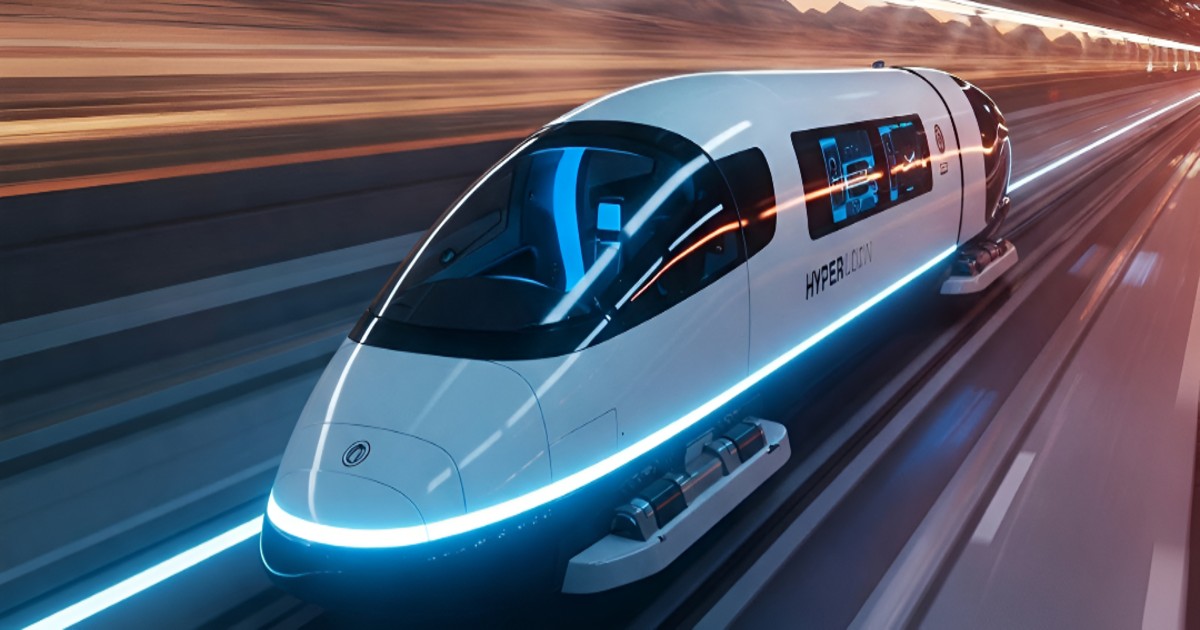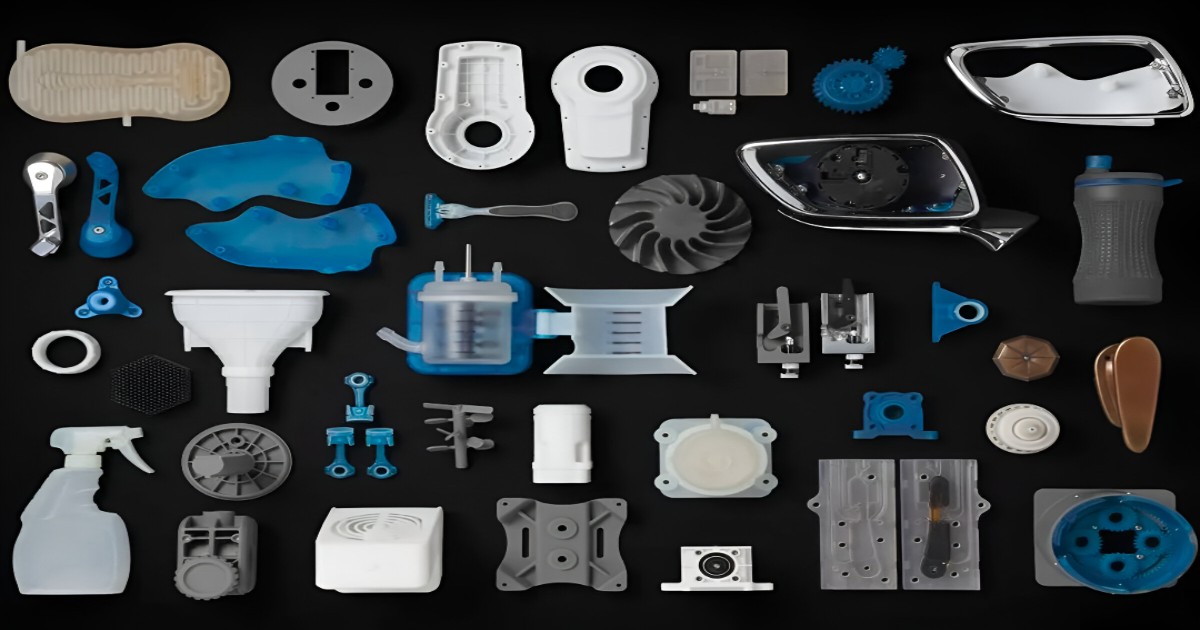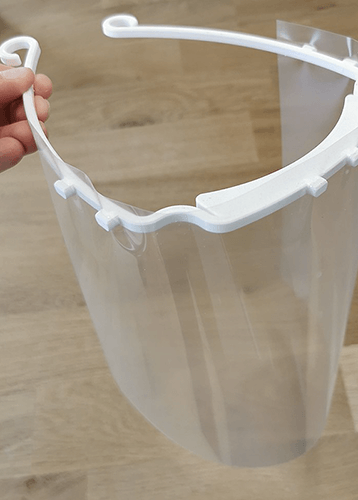The Hyperloop is a revolutionary transportation concept first introduced by Elon Musk in a 57-page white paper in 2013. This futuristic system envisions high-speed travel through a low-pressure tube, where passenger pods are suspended in air to eliminate friction and minimize air resistance. The result is an ultra-fast and efficient mode of transport that could surpass the speed of airplanes and high-speed rail networks.
By creating a near-vacuum environment within the tube, the Hyperloop drastically reduces drag, allowing the pods to travel at incredible speeds with minimal energy consumption. The propulsion system would use either magnetic levitation or air bearings to elevate the pods, ensuring a smooth and frictionless ride. Additionally, the hyperloop could be constructed both above ground and underground, offering flexibility in implementation based on geographic and infrastructural considerations.

The Hyperloop promises several advantages over traditional transportation systems, making it an exciting innovation for the future.
Speed and cost efficiency: One of the most significant advantages of the Hyperloop is its unprecedented speed. The system is expected to be at least twice as fast as commercial airplanes and significantly faster than high-speed trains. This means that long-distance travel times could be dramatically reduced, making cities and countries more interconnected than ever before. For example, a journey that currently takes hours by plane or train could be completed in minutes using the Hyperloop. This advancement in product design would revolutionize the way people commute and conduct business, leading to increased economic productivity. Additionally, while the initial costs of developing a Hyperloop network may be substantial, the long-term operational expenses are expected to be relatively low. Compared to high-speed rail construction, the Hyperloop would require less land and infrastructure, leading to lower maintenance costs. The energy-efficient design also means that running costs would be minimal, potentially making travel more affordable for passengers.
Environmental sustainability: The transportation industry is one of the largest contributors to global carbon emissions, and the Hyperloop presents a promising solution to reduce this impact. According to Musk’s white paper, the Hyperloop could be powered entirely by renewable energy sources, such as solar power. This would result in a system with a zero-carbon footprint, significantly reducing greenhouse gas emissions. By offering a cleaner alternative to air travel and road transport, the Hyperloop could play a crucial role in combating climate change and promoting sustainable mobility. With the world increasingly prioritizing eco-friendly transportation solutions, the Hyperloop represents a forward-thinking step towards a greener future.
Versatile applications: Beyond passenger travel, the Hyperloop has the potential to revolutionize cargo transportation. The ability to move goods at high speeds could enhance global supply chains, reduce reliance on trucks and airplanes, and lower overall transportation costs for businesses. Additionally, airports could integrate Hyperloop systems to improve passenger mobility between terminals, enhancing efficiency and convenience. Shipping docks could also benefit from the technology, using Hyperloop tubes instead of trucks to transport goods over short and long distances.
While the hyperloop presents a promising vision for the future, several challenges must be addressed before it can become a viable transportation option.
Land acquisition and infrastructure constraints: One of the biggest obstacles to implementing the hyperloop is securing the necessary land for construction. The system requires a straight path between destinations, as its high speeds make sharp turns unfeasible. Acquiring this land may be difficult, especially if the route crosses UNESCO heritage sites, residential areas, or protected landscapes. Governments and developers will need to navigate complex legal and regulatory issues to obtain permission for land use. Additionally, some communities may resist Hyperloop projects due to concerns about property displacement, environmental impact, and aesthetic disruptions.
Safety and disaster resilience: Passenger safety is a crucial consideration for any transportation system, and the Hyperloop is no exception. Since the concept is still in its experimental stage, there are concerns about how the system would handle emergencies such as earthquakes, mechanical failures, or power outages. Unlike traditional trains or planes, where passengers can evacuate in the event of an emergency, the enclosed nature of the Hyperloop poses unique challenges. Developers must establish comprehensive safety protocols, including fail-safe mechanisms, emergency exits, and rapid-response solutions to ensure passenger well-being in case of accidents or natural disasters.
Passenger comfort and health concerns: The Hyperloop’s ultra-high speeds could present challenges related to passenger comfort. The conceptual design suggests that the pods will have limited space, restricting movement and possibly causing discomfort during long journeys. Moreover, the rapid acceleration and deceleration could lead to motion sickness or dizziness for some passengers. Addressing these issues will require innovative solutions, such as advanced stabilization systems, comfortable seating arrangements, and onboard medical support for emergencies.

Despite these challenges, progress is being made towards bringing the Hyperloop concept to life. Several companies, including Virgin Hyperloop and Hyperloop Transportation Technologies, have been actively prototyping and refining the technology. Governments and private investors are also showing increasing interest in funding research and infrastructure projects related to the Hyperloop.
Countries such as the United States, India, and the United Arab Emirates have proposed potential routes for Hyperloop implementation, with feasibility studies already underway. If successful, the Hyperloop could revolutionize global travel, reducing congestion on roads and in the skies while offering a fast, sustainable, and cost-effective alternative.
As engineering and science continue to refine the technology, addressing safety concerns and improving passenger experience will be critical to making the Hyperloop a mainstream transportation mode. If these hurdles are overcome, we may soon witness a new era of travel that reshapes how we connect with the world.
The Hyperloop represents a groundbreaking leap forward in transportation technology, with the potential to redefine the way people and goods move across vast distances. Its speed, efficiency, and environmental benefits make it an attractive alternative to traditional transport methods. However, significant challenges remain, including land acquisition, safety concerns, and passenger comfort.
With continued innovation, investment, and regulatory support, the Hyperloop could become a reality within the next few decades, bringing with it a new age of high-speed, sustainable, and interconnected travel. The journey towards realizing this ambitious vision is just beginning, but its impact on the future of transportation could be profound.
Back in the day pigeons were used to relay messages between individuals as the sky was the fastest and safest passage at the time. It seems like the sky is going to be the future of transportation of packages, and people as well. With the constantly increasing population, there is an urgent need to find solutions for the traffic and the hours individuals waste stuck in them. With constantly advancing technology, there is hope for a more systematic and efficient system to come into place.
There are several reasons why the world is looking to the skies for solutions. With individuals migrating to cities constantly, the population, and the number of vehicles on the roads are also increasing. Reconstructing roads to be broader in these densely populated cities is impossible, making flying cars crucial. Furthermore, reaching remote places is often a challenge for individuals, comprised of long travel hours on poorly constructed roads with no medical assistance available if necessary in case of accidents. Having a flying car would make it much easier to access these locations and even deliver packages. Similarly, in the case of natural catastrophes, flying cars and drones could be used to drop off care packages, and medicines, and even be used to rescue individuals.

The e-commerce and automotive industries are two industries that are researching and developing this technology. The automotive industry is working on vertical take-off and landing technology that is more suitable for urban settings, eliminating the need for runways for take-off. Making flying cars energy-efficient and silent is another requirement that must be fulfilled. There is a need to make all drones and cars autonomous as well as create technology through which all of them can communicate and work independently.
While the flying car dream seems near, many individuals are skeptical about its success. Several hurdles will have to be crossed, the first being- governments and countries will have to lay down specific air traffic rules and regulations and invest in infrastructure for building parking and charging stations. The second hurdle will essentially be regarding safety issues and weather, as extensive testing by manufacturers will be required for passengers to trust these autonomous vehicles. Several emergencies will have to be thought through to ensure complete safety and fewer fatalities and the drones and cars will have to be able to work under any circumstances. The third hurdle would be that there might come a point where traffic will shift to the air and authorities will have to look for ways to mitigate that.
This technology if implemented has the opportunity to solve several problems of the urban world. While this may not be possible for the next few years, it is the future and individuals must capitalize on the chance to invest it in today.
The coronavirus has caused economic disasters all around the world resulting in unemployment, inflation, and massive losses to several companies.
India too has suffered heavy losses due to the pandemic but we may have gained something too.
China has been the undisputed manufacturing king for several years due to state-of-the-art infrastructure, cheap and skillful workforce, and an impeccably well-connected supply chain among various things. With the onset of Covid-19 and complete lockdowns taking place in China, companies suffered from production and supply shortages. Companies have realized that they cannot be dependent on a single country for all their manufacturing operations and hence, are looking to set up manufacturing units in other countries.
This is an opportunity for India to attract foreign direct investments (FDI) and bring companies to manufacture here. India must grasp this opportunity with both hands and take lessons from China’s past on how they achieved this level of success. In 2018, China manufactured 28% of the global manufacturing output, while India was way behind only manufacturing about 3% (Richter, 2020). While there are a few benefits that India already possesses such as a large young workforce and low wages, there are many challenges India will have to endure in order to become the manufacturing hub.
Competition from other countries: Other developing countries such as Vietnam, Cambodia, Bangladesh, South Korea, Indonesia, Thailand, and Singapore are strong competitors against India that may have a chance to be the next manufacturing hub. Countries like Vietnam and Cambodia have laws that support international investors by providing tax cuts and exemptions. Singapore and South Korea have advanced manufacturing technology making them attractive spots as well.
Training the Indian workforce: India’s biggest asset is its young workforce, and in order to utilize this asset, the workforce needs to be trained in various skills. International companies often want workforces that can further innovation, be highly skilled in multiple areas, and are easy to do business with. India has been successful in acquiring the international service market but there needs to be an investment to train and educate this large workforce.
Infrastructure: China’s biggest point of attraction is its well-integrated infrastructure that not only produces high-quality products but makes the supply chain process cheaper and more efficient. The Indian infrastructure is nowhere close to its neighbor, but the government needs to invest in the research and development of building these infrastructures. Transportation and supply chain is the key area of focus.
Better reforms and ease of doing business: Initiatives such as Make in India, Atmanirbhar Bharat, and several incentives for emerging technologies such as Drones, Additive Manufacturing or 3D Printing, and Electric Vehicles, Space Programmes are promoting manufacturing and Make in India activities.
India has the opportunity to be a success, the trade war between USA and China and the current pandemic situation are definitely going to motivate companies to look for alternatives for manufacturing. There is also an equal need in improving the skill set of our large young workforce. Training them in areas such as Product Design, Engineering Fundamentals, and Manufacturing Technologies is required for our success. India has the potential, they just need to act fast and smartly in order to maximize this chance.
Citations
Richter, F. (2020, February 25). These are the top 10 manufacturing countries in the world. Retrieved July 27, 2020, from https://www.weforum.org/agenda/2020/02/countries-manufacturing-trade-exports-economics/
With the situation we face today of COVID-19, the time for the development of the new product is scarce, as the product has to be tested and launched quickly in the market to counter the health situation today. The traditional method of manufacturing and testing the iterations seems to be against what is required today, as those methods are costlier, time-consuming, and difficult due to lockdown situations, which make it difficult for manufacturing molds, products, etc. The traditional method of manufacturing, like molding, requires molds to be produced for the different iterations to be tested, which is costlier and may take several days for the product to be manufactured and tested to check on product features and make changes for desirable results, and this long cycle goes on. The lockdown situation makes this process even worse with the unavailability of workers and stringent time factor we are fighting against.

An effective prototype is one that can give product developers an accurate idea of how the final product will perform. Whether that is reviewing the texture and color or putting the part up to rigorous testing, engineers need a prototype that is up to the task. When it comes to product development, time is of the essence, especially if you had to put design iterations on hold during the lockdown. rapid prototyping is a blessing in disguise to counter the situation. Rapid prototyping is a group of techniques used to quickly fabricate a scale model of a physical part or assembly using 3D CAD data. Construction of the part or assembly is usually done using 3D printing or additive layer manufacturing technique. Your product development timeframe need not be affected by rapid prototyping at your service. Improving parts with 3D printing is quick, simple, and cheaper with many iterations that can be produced and tested as compared to traditional methods. In a few hours or a day, the original design can be updated on 3D CAD tools, and the file can be shared with the manufacturer digitally, and the prototype would be in your hands within a few hours or days, as per the complexity and size of the design. The manufacturing errors can easily be eliminated with rapid prototyping as compared to traditional methods of production. The models can easily be scaled as per the need, with limitations arriving only at the maximum size of product a given model of machine can produce. Cutting down on costs is a necessity for industries battling these tough times, but this, in essence, does not mean killing innovations necessary for progress.

Rapid prototyping enables innovation with its freedom of design for engineers to manufacture parts with intrinsic and small detailed designs and geometries with interlocking features, which is not possible to manufacture with traditional methods. This helps in creating product assemblies with many components into a single-component product, which in turn saves cost. Additive manufacturing offers huge varied combinations of technologies, from laser sintering to fused deposition modelling, and materials, from metals to plastics such as aluminium, nylon, and carbon fiber, that engineers can choose from to optimize their designs. It provides a variety of textures and colors to choose from. The input files can easily be changed to fulfill the design requirements.
© 2025 RA Global Tech Solutions
Site design and developed by Rajkar Global